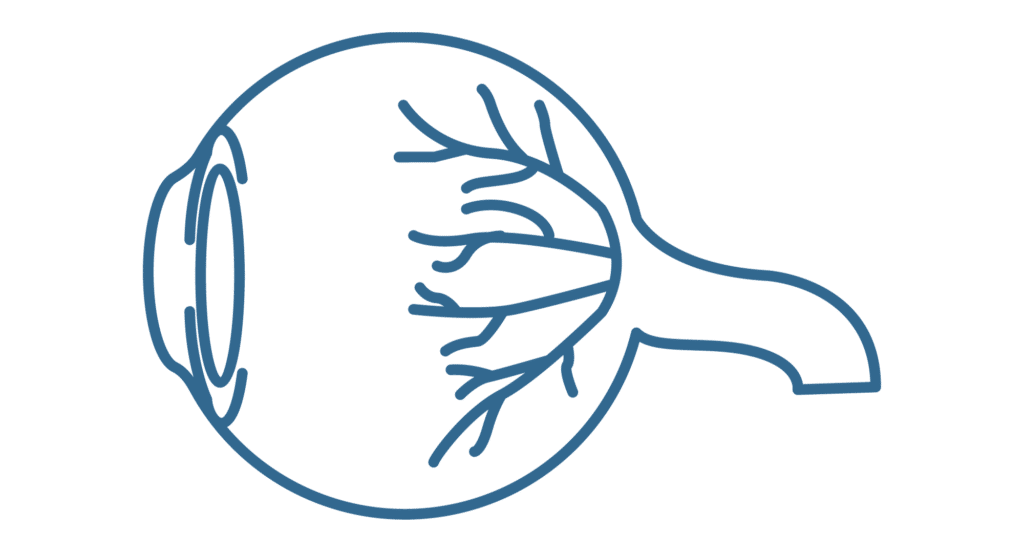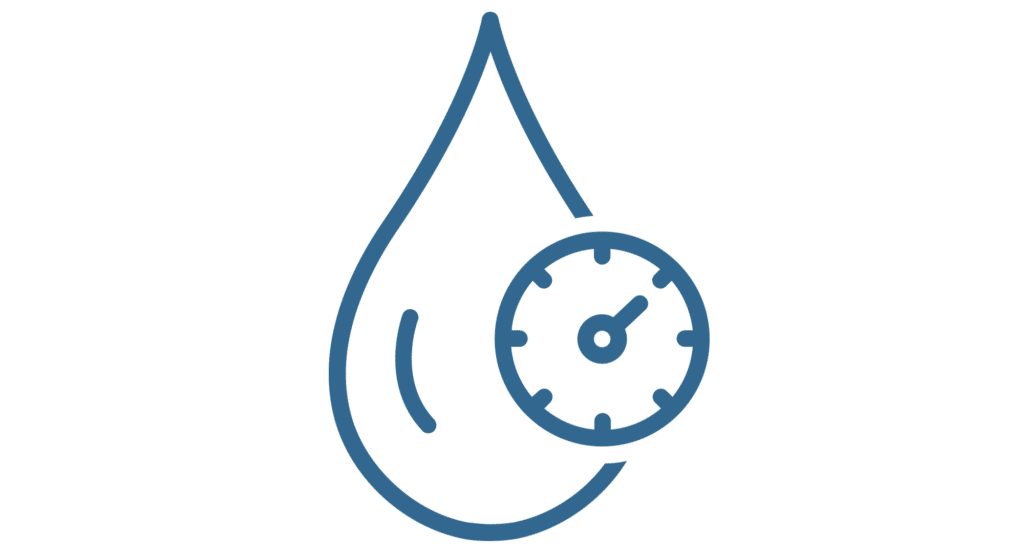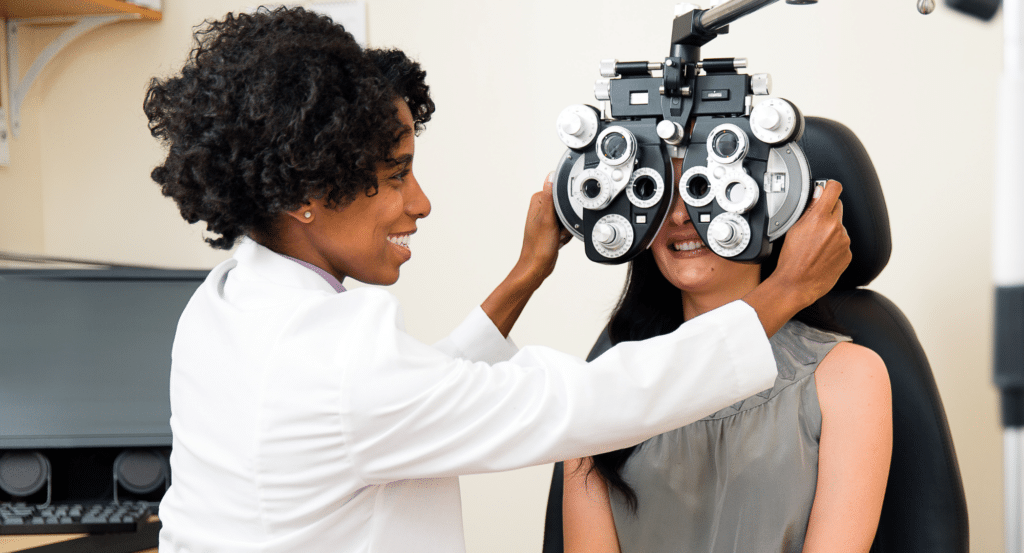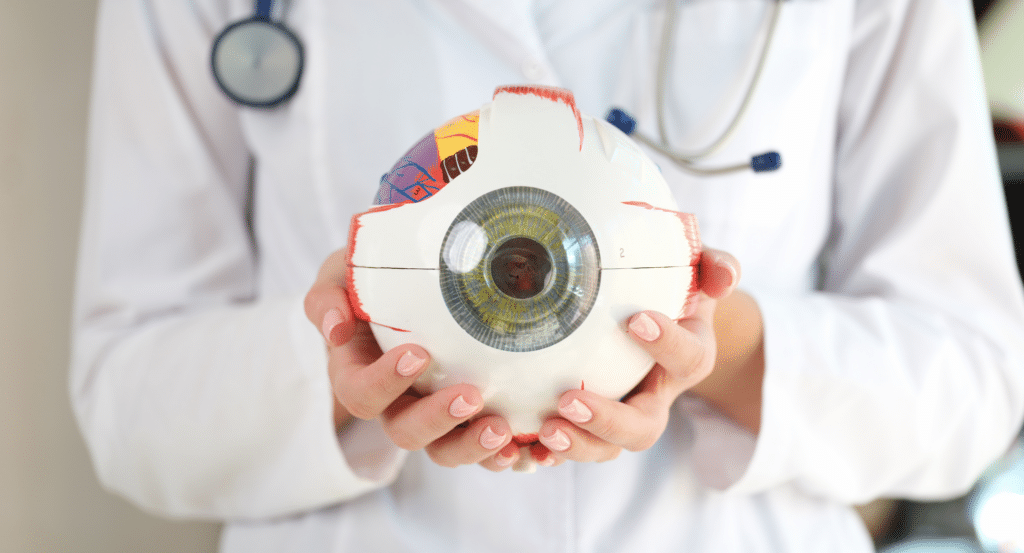Posted by: Mann Eye in Advice, Eye Health
Medically Endorsed by Bruce Krawiecki, OD
As November dawns and autumn leaves fall, it’s time to shed light on an often-overlooked but critical health issue – Diabetic Eye Disease – as we observe Diabetic Eye Disease Awareness Month.
Diabetic eye disease is a serious complication of diabetes. It can lead to vision impairment and even blindness if not managed properly. At Mann Eye Institute, your trusted vision specialists, we care about you, your health, and your vision. The good news is that with early detection and proper care, the risk of vision loss can be significantly reduced.

What is Diabetic Eye Disease?

Diabetic eye disease, also known as diabetic retinopathy, is a group of eye conditions that affect people with diabetes. It results from damage to the blood vessels of the retina, the light-sensitive tissue at the back of the eye. There are two primary types of diabetic eye disease:
1. Non-proliferative Diabetic Retinopathy (NPDR): This is the early stage of diabetic eye disease, characterized by damage to the tiny blood vessels in the retina, causing them to leak or swell. In NPDR, vision might not be significantly affected, but it’s a sign that diabetic eye disease is progressing.
2. Proliferative Diabetic Retinopathy (PDR): In this advanced stage, new, abnormal blood vessels begin to grow on the surface of the retina. These vessels can leak blood into the eye, leading to severe vision problems, including blindness.
Causes of Diabetic Eye Disease
The primary cause of diabetic eye disease is, as the name suggests, diabetes. Elevated blood sugar levels over an extended period of time can damage the small blood vessels in the retina. This damage leads to the development of diabetic retinopathy. Several factors can increase the risk of diabetic eye disease, including:

1. Poorly Managed Diabetes: The risk of diabetic eye disease is higher in individuals who struggle to control their blood sugar levels.

2. Duration of Diabetes: The longer someone has diabetes, the greater their risk of developing diabetic retinopathy.

3. High Blood Pressure: Uncontrolled hypertension can exacerbate eye complications in people with diabetes.

4. High Cholesterol: Elevated cholesterol levels can also contribute to eye damage in diabetic patients.
Common Symptoms
Diabetic eye disease often progresses without noticeable symptoms in its early stages. However, as the condition advances, symptoms may become apparent, including:
- Blurred or Distorted Vision: Vision may become blurry, making it difficult to see fine details.
- Floaters: Tiny specks or spots that seem to float across your field of vision.
- Dark or Empty Spots: These can appear in your vision.
- Difficulty Seeing at Night: Problems with night vision can be a sign of diabetic eye disease.
- Sudden Vision Loss: In severe cases, sudden vision loss may occur.
Prevention and Management

Preventing diabetic eye disease and managing its progression is crucial to preserving your vision. Here are some essential strategies:
1. Regular Eye Exams: Routine eye examinations are vital for early detection. If you have diabetes, schedule annual eye check-ups with an optometrist or ophthalmologist. During these appointments, your eye doctor will perform a comprehensive examination of your eyes, checking for signs of diabetic retinopathy, glaucoma, cataracts, and other eye-related conditions.
They may also measure your visual acuity, examine your eye pressure, and assess your peripheral vision. By doing so, they can track changes in your eye health over time and adjust your treatment plan accordingly.
2. Control Blood Sugar: Managing your blood sugar levels through a healthy diet, regular exercise, and medication prescribed by your healthcare provider is key to prevention. Consistency and routine are key when it comes to blood sugar management. Regular monitoring of your blood sugar levels is crucial to gauge the effectiveness of your management plan and make necessary adjustments.
3. Monitor Blood Pressure and Cholesterol: Keeping blood pressure and cholesterol levels in check can help protect your eyes. High blood pressure can damage your retinal blood vessels, impact the optic nerve (which is responsible for transmitting visual information to the brain), and can even affect the fluid dynamics within the eye. Significant fluctuations in blood pressure can lead to changes in intraocular pressure, potentially exacerbating conditions like glaucoma. High cholesterol can cause atherosclerosis which can reduce blood flow to certain parts of the eye, and eventually can cause a retinal vein occlusion – or blockage – that can result in sudden partial or complete vision loss.

4. Lifestyle Choices: Avoid smoking and excessive alcohol consumption, as these can exacerbate eye complications. Smoking is linked to and increased risk of age-related macular degeneration, cataracts, dry eye syndrome, and a significant risk for diabetic retinopathy. Alcohol consumption can contribute to poor eye health by causing nutritional deficiencies, dry eye syndrome, alcohol-induced optic neuropathy (which can cause irreversible vision loss), and an increased risk of age-related macular degeneration.
5. Follow Medical Advice: If you are diagnosed with diabetic eye disease, adhere to the treatment plan recommended by your eye specialist. Treatments may include laser therapy, medication injections, or surgery.

Diabetic eye disease is a serious condition that can lead to vision loss if left unmanaged. However, with early detection and appropriate medical care, the progression of this condition can be slowed or even halted. If you have diabetes, take proactive steps to monitor your eye health, manage your blood sugar levels, and make lifestyle choices that support your overall well-being. By doing so, you can significantly reduce the risk of diabetic eye disease and protect your vision for years to come.
At Mann Eye Institute, it is our goal that every patient we serve will See Life Better with the vision they deserve. Our caring doctors have extensive experience in the diagnosis and management of diabetic eye disease and are committed to guiding patients through this process, ensuring they understand their condition and treatment options while offering the support and guidance needed to make informed decisions about their eye care. If you have diabetes (even if you don’t currently have any symptoms affecting your vision), schedule a comprehensive eye exam today to protect yourself from preventable vision loss.

